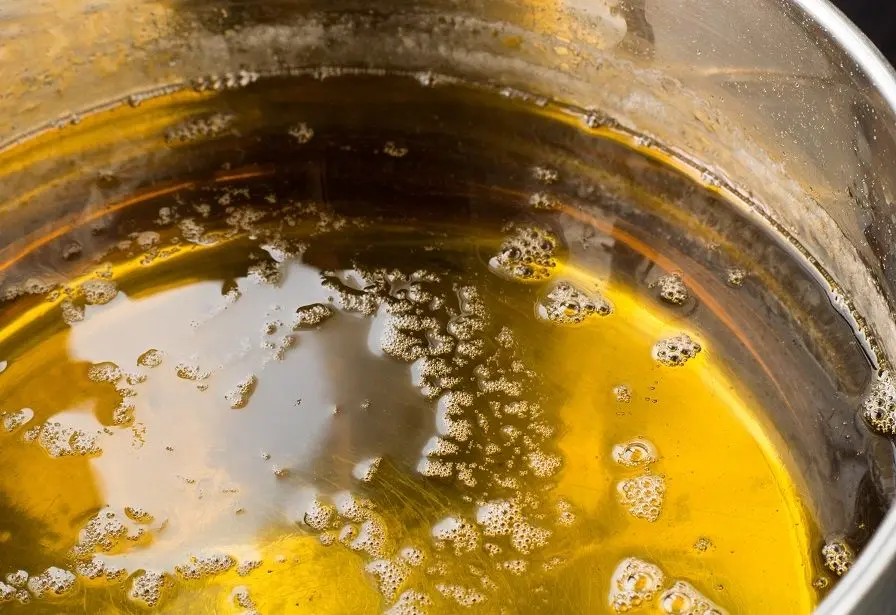Contents
No yeast strain can process beet or cane sugar in its pure form. First, yeast spends time splitting (hydrolyzing) sugar molecules into simpler substances – saccharides, and only then decompose the resulting substances into the alcohol and carbon dioxide we need. The moonshiner can do the hydrolysis artificially, while receiving a number of advantages. The technique is similar to the preparation of ordinary syrup.
Invert sugar – the process of splitting one molecule of sucrose in beet or cane sugar into two molecules of fructose and glucose. At home, this is done under the influence of citric acid, which acts as a catalyst for the reaction, and high temperature (above 80 ° C). The composition of the inverted syrup is close to natural honey.
Benefits of Sugar Inversion
1. Fermentation is faster, as a result, the mash accumulates less harmful impurities, which are a by-product of the yeast. Other things being equal, moonshine can be obtained a couple of days earlier.
2. Invert sugar does not impair the organoleptic (taste and aroma) of grain and fruit brews as much as regular sugar. Its use in a mixture with any fruit (berry) and starch-containing raw materials is preferable.
3. High temperature kills microorganisms on the surface of sugar, as a result, the risk of infecting the mash with pathogenic fungi is sharply reduced.
4. When using classic distillers (moonshine stills), the quality of the finished product is somewhat higher due to the initially smaller amount of impurities in the mash. For distillation columns, this does not matter.
Disadvantages of invert sugar
1. It takes extra time to prepare the mash. You need to create a high temperature.
2. During the inversion, furfural appears – a toxic liquid with the smell of rye bread or almonds, which, at high concentration, causes irritation of the mucous membranes and skin. But this substance is released only during the hydrolysis of hemicellulose – a polysaccharide contained in plant cells, which are few in pure sugar.
In any homemade jam, the content of furfural is much higher than with the correct inversion technology, so the harm of inverted sugar is greatly exaggerated. Caramelization of berries and fruits is much more dangerous than making syrup.
3. The output of moonshine on inverted sugar is a couple of percent lower.
Invert Sugar Recipe
Inversion is accompanied by active release of foam, so it is important to choose the right container. After mixing water and sugar, it is desirable that at least a third of the volume remains free.
Proportions: to invert 1 kg of sugar, 0,5 liters of water and 3-4 grams of citric acid are required. The amount of acid affects only the reaction rate (syrup preparation time) and does not affect the quality of moonshine.
Ingredients:
- sugar – 3 kg;
- water – 1,5 liters;
- citric acid – 9-12 grams.
Technology of preparation
1. Heat water in a large saucepan to 70-80°C.
2. Slowly add sugar, stirring constantly.
3. Bring the mixture to a boil, boil for 10 minutes, removing white foam. You should get a sugar syrup of a homogeneous consistency.
4. Reduce the heating power to a minimum. Slowly (very important) add citric acid. Mix.
When acid is added, the syrup immediately begins to foam. If poured too quickly, the contents of the container will splash out!
5. Close the pan with a lid, increase the intensity of heating. Boil the syrup for 60 minutes at a temperature not lower than 80°C. You can maintain boiling water, this is a guarantee of a positive result.
6. Cool the finished invert sugar to 30°C, then pour into a fermentation tank.

7. Add 4 liters of water and 100 grams of pressed (20 grams of dry) yeast per 1 kg of regular sugar (before inversion).
8. Install a water seal (preferably), maintain the fermentation temperature at 18-31°C (optimum – 26-30°C).
9. Overtake the finished mash.
The video shows a slightly different way of inverting sugar, in which a minimal amount of furfural is released.









